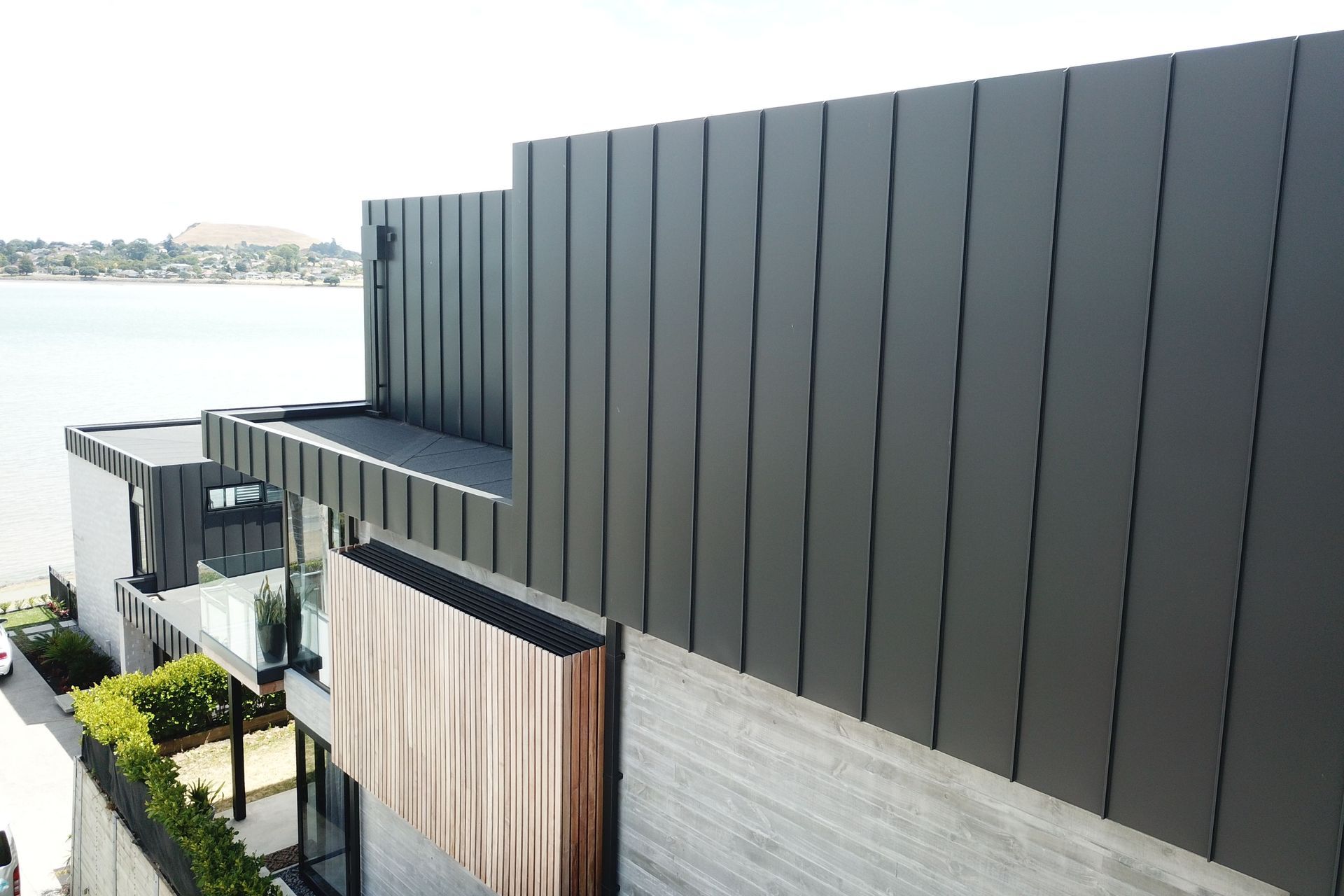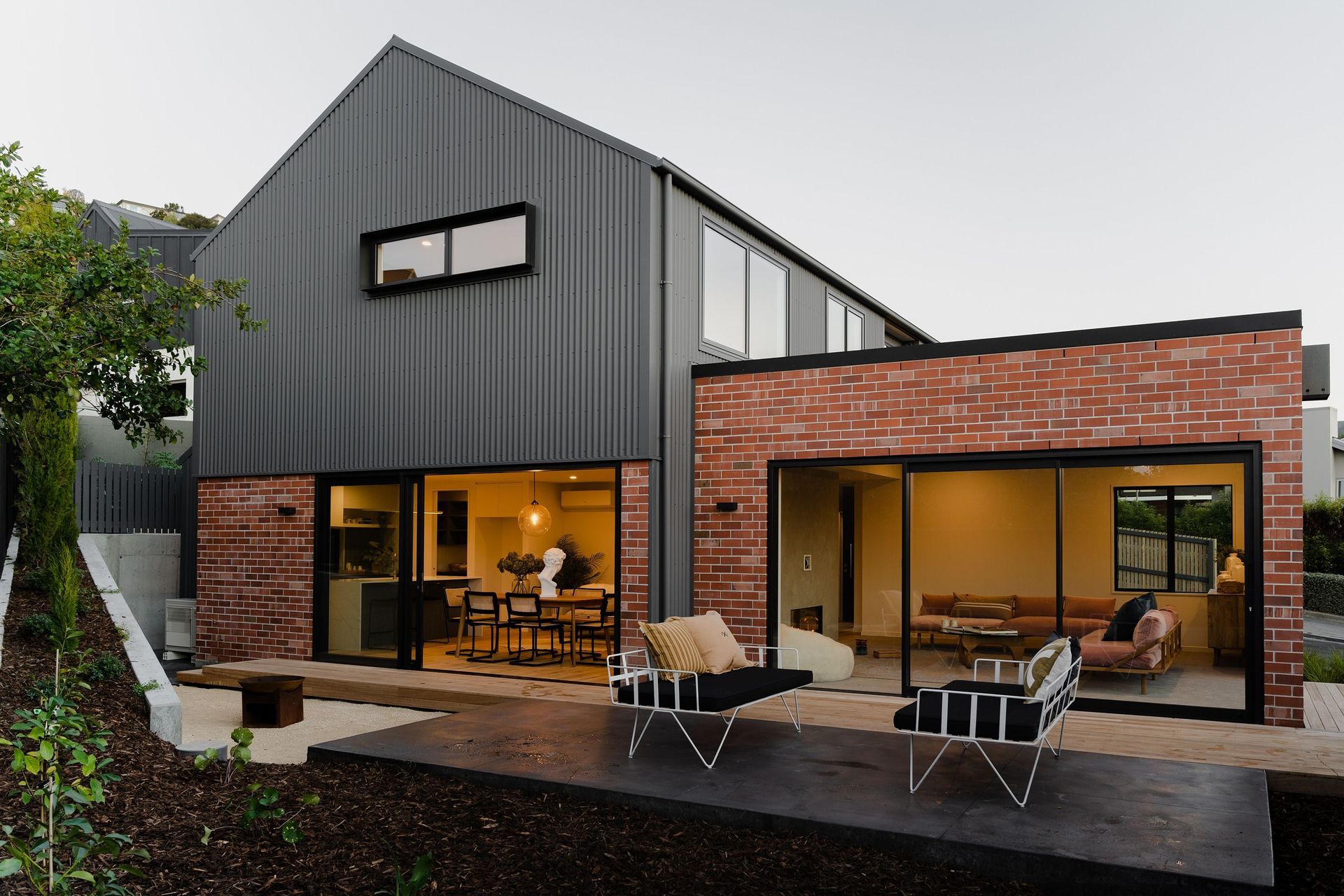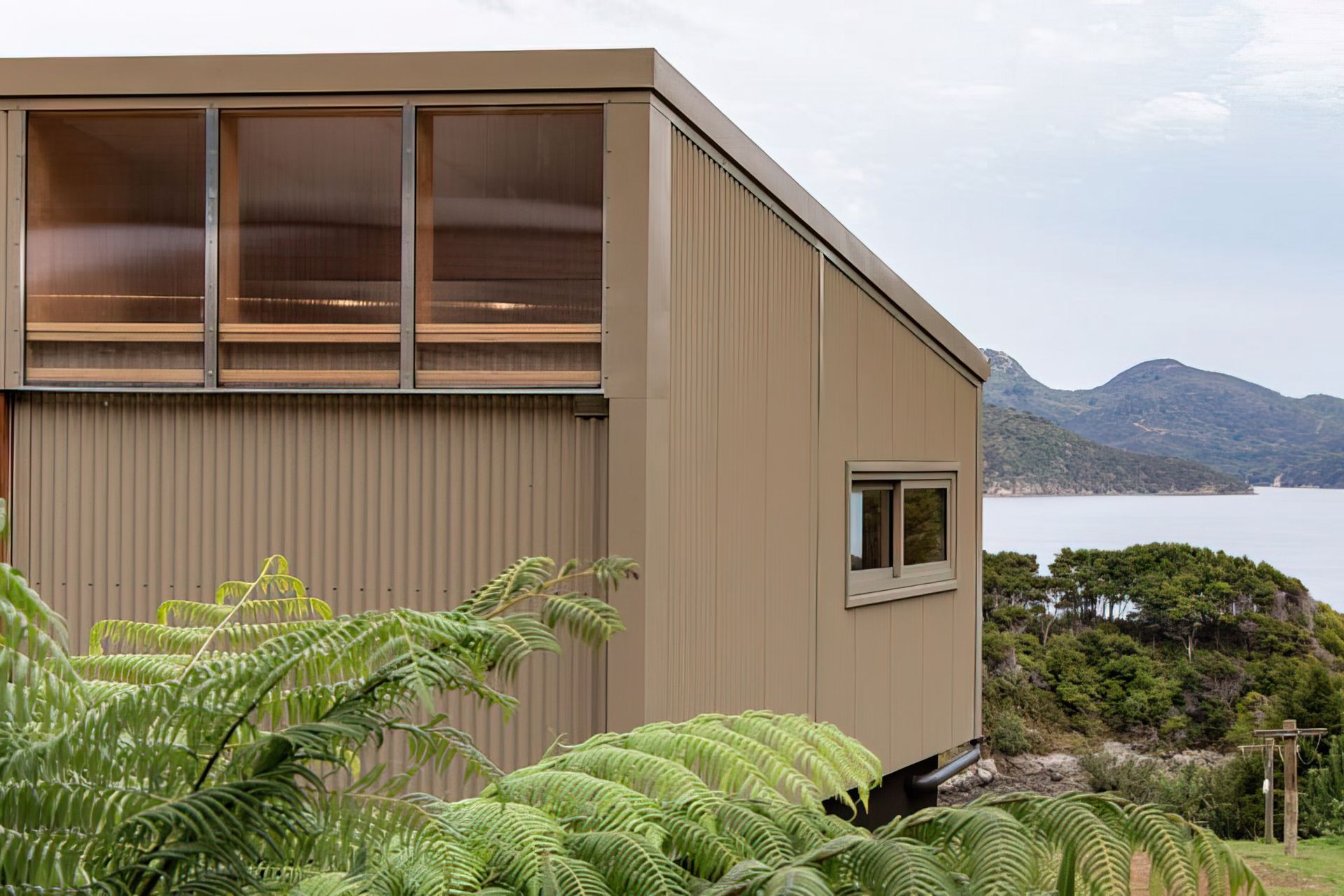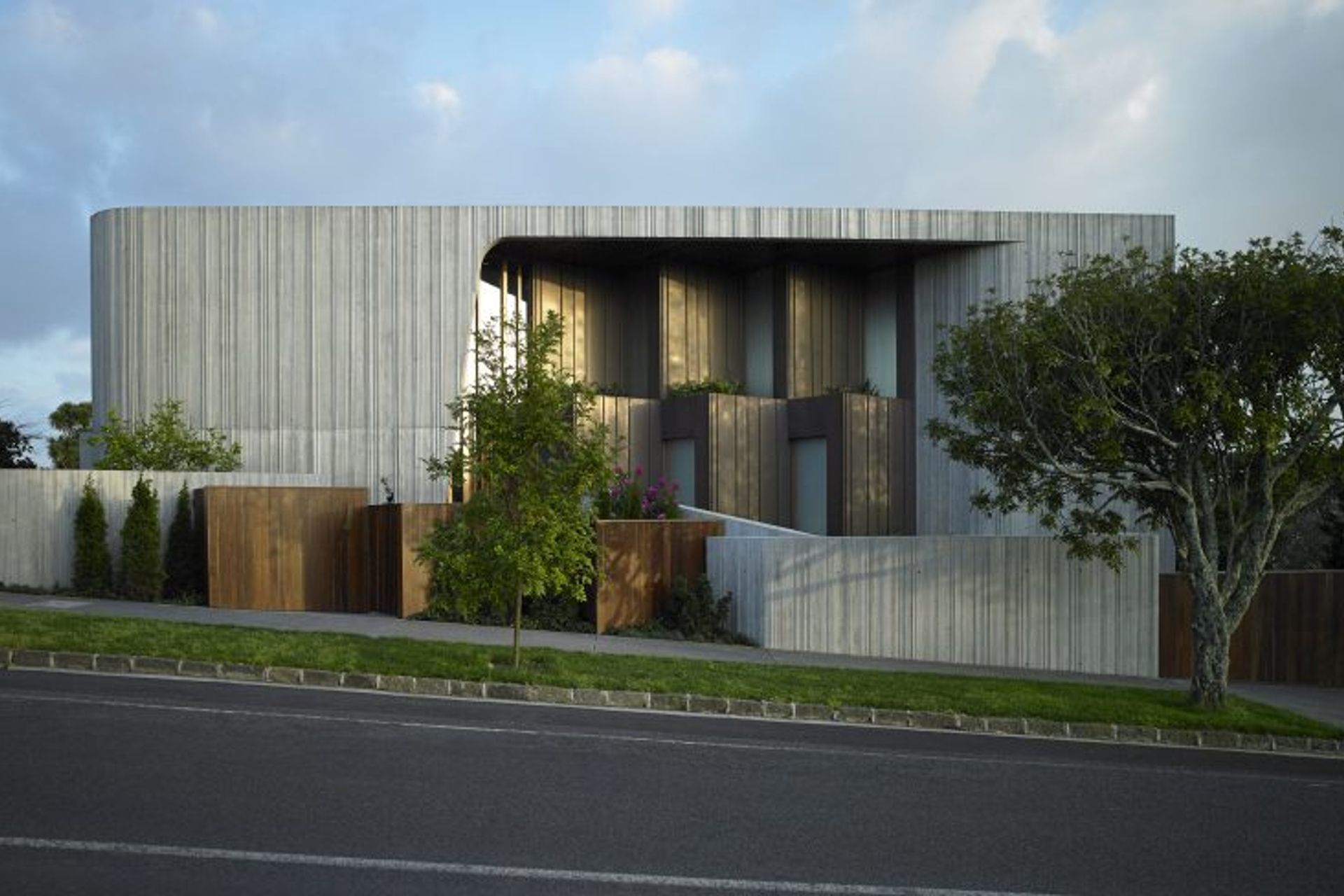The pros and cons of metal cladding for New Zealand homes
Written by
06 June 2023
•
6 min read

Metal cladding has been increasing in popularity in New Zealand for a number of years now despite the abundance of prolific alternatives like timber and brick. Awareness has grown but also the product itself has evolved with metal cladding panels more viable practically, stylistically and economically. Understanding the advantages and disadvantages as they are today is the best way to make the most informed decision for your next project.

Advantages of metal cladding
It's always good to start with the positives and for metal cladding, sometimes called metal siding, there are plenty to point to.
Durability and longevity
Metal cladding, like those made from aluminium or steel materials, is highly durable and long-lasting. It can withstand New Zealand's often harsh weather conditions, including strong winds, rain, and UV radiation, without deteriorating or losing its aesthetic appeal. When properly installed and maintained, it can last for several decades giving a great return on investment.
Low maintenance and upkeep
It is also a solution that requires minimal maintenance compared to other cladding options you'll find on the market in New Zealand. It is resistant to rot, pests, and fungal growth, eliminating the need for regular repairs or treatments. Occasional cleaning is usually sufficient to keep the metal panels in good condition, reducing maintenance costs and efforts over the long term.
Related article: What is cladding? A comprehensive guide

Architectural and design versatility
For those utilising the skills of an architect, metal cladding provides these professionals with a wide range of design options. Most metals can be shaped, formed, and finished in various ways which is just not possible with other exterior cladding options. This allows very creative and unique building designs to emerge. These cladding systems often offer flexibility in terms of colour, texture, and profile, enabling customisation to match the desired stylistic vision of the project.
Lightweight and cost-effectiveness
Metal cladding is lightweight compared to some alternative materials, which can make installation easier and more efficient. Lightweight materials are also easier to transport, an important cost and logistical consideration and one that will lower the carbon footprint of a project. Though the upfront cost of metal cladding panels can sometimes be higher, the fact that little maintenance, repairs and restorations are required makes it a compelling choice for the finances in the long run.
Related article: What is the most cost-effective cladding in New Zealand?

Fire and rot resistance
With the increasing extremities in our local climate and weather, issues like susceptibility to fire and rot are of increasing importance. As a non-combustible option, metal cladding offers excellent fire resistance properties, especially important if local wildfires are prevalent in your area. If you live in a particularly wet and humid location, metal also presents a strong case with its natural resistance to mould especially compared to wood siding or another natural material alternative.
Energy efficiency and sustainability
Metal cladding can improve energy efficiency in homes with excellent thermal performance, helping reduce heat transfer through the building envelope. This can lead to lower heating and cooling costs, as well as increased comfort for building occupants. It can also be a sustainable choice for construction projects as most metals are recyclable, reducing waste and environmental impact. Additionally, metal cladding is often produced using recycled materials, further minimising its environmental impact.

Disadvantages of metal cladding
As with most products, especially when it comes to construction projects, there are a few drawbacks, some of which may or may not be relevant to your given situation.
Upfront cost
Metal cladding building materials can have higher upfront costs compared to some alternatives. The cost of metal itself, as well as the installation costs and techniques specific to metal cladding, mostly contribute to this. However, the long-term durability and low maintenance requirements can offset these initial costs.
Noise levels
Some people also have concerns about noise when it comes to metal cladding as it can transmit sound more effectively compared to other options. This can lead to increased noise levels inside the building, particularly in areas with high ambient noise or heavy rain. Acoustic insulation measures can minimise the impact of this.
Risk of corrosion
While metal cladding materials like steel and aluminium are generally corrosion-resistant, certain environmental conditions in New Zealand, such as coastal areas exposed to salt-laden winds, can increase the risk of corrosion over time. Implementing proper anti-corrosion measures like high-quality coatings, finishes or painted surfaces and regular inspections can help mitigate this risk.
Related article: Exquisite house cladding ideas for the modern home

Reliance on insulation
As a good conductor of heat, metal can transfer heat quickly. In colder climates, metal cladding can sometimes contribute to heat loss and increase the need for insulation to maintain thermal comfort inside the building. Conversely, in warmer climates, metal cladding can absorb heat, potentially increasing cooling requirements. Proper insulation and ventilation strategies, which most modern homes are designed with anyway, are always encouraged.
Expansion and contraction
Metal cladding materials can expand and contract with temperature variations. In New Zealand, where there are significant temperature fluctuations between seasons, this can lead to the development of gaps or distortions in the cladding system. Proper installation techniques, including the use of expansion joints and appropriate fastening methods, should be pursued with work done by experienced professionals. This can also help protect against condensation too.
Aesthetics and changes in appearance
Over time, some metal cladding, like zinc and copper, can develop a patina or change in appearance due to weathering and exposure to the elements. While some people appreciate the natural ageing of these materials, others may prefer a more consistent appearance. Other factors with respect to aesthetics include personal preference and taste with some finding options like brick and timber more pleasing, which is subjective and of course perfectly acceptable.
Related article: What are the different types of cladding? A guide to residential cladding

Metal cladding: pros and cons covered
There's a lot to take in, as you can see, when exploring the pros and cons of metal cladding. Overall, it is a long-term, designer-friendly and energy-efficient option but factors around the upfront costs and the professional care required for installation could be a barrier. So long as you are aware of these and understand your own needs and requirements, you'll be able to make the decision for your project.
Discover a wide range of stylish metal cladding solutions on ArchiPro